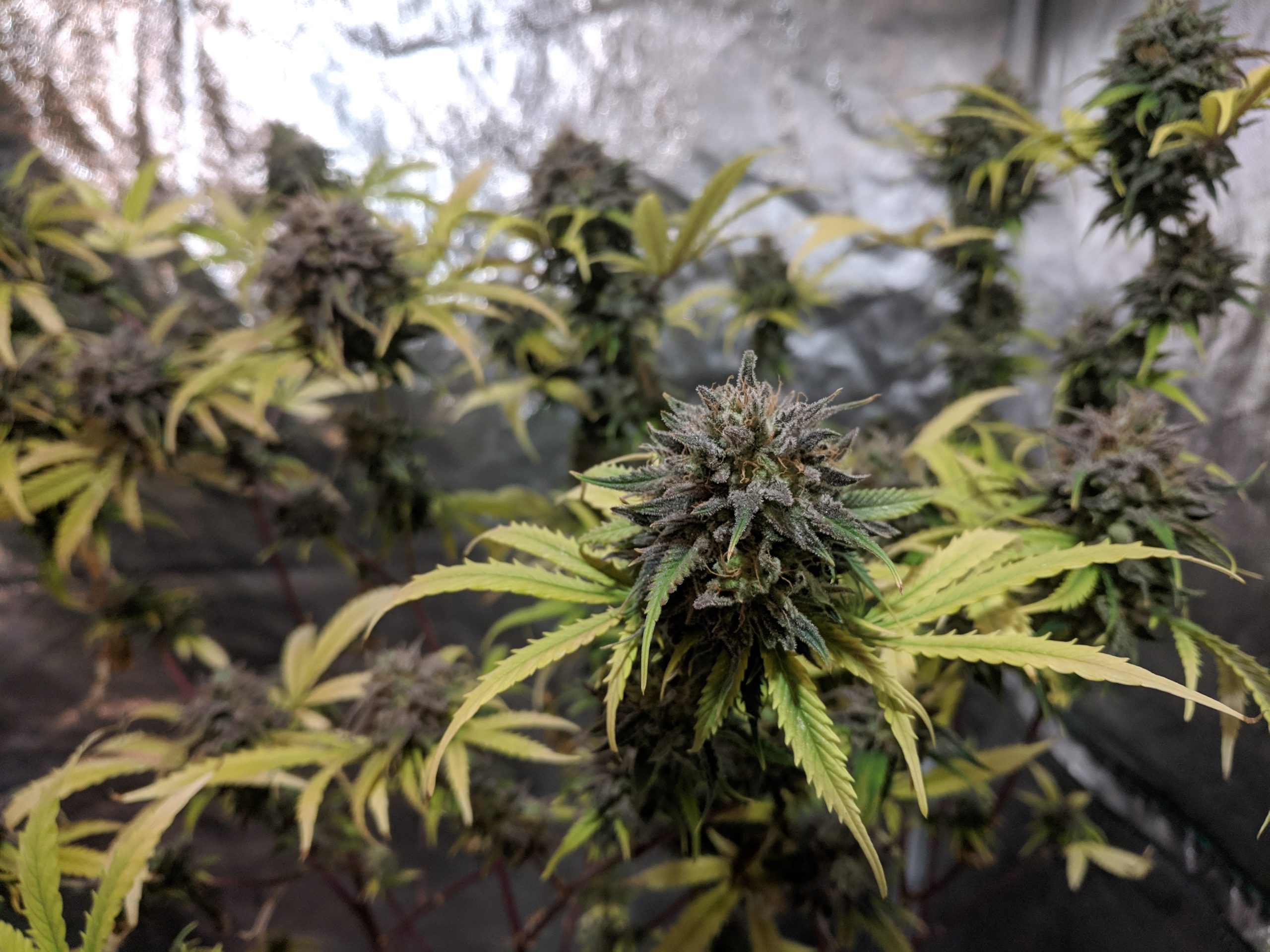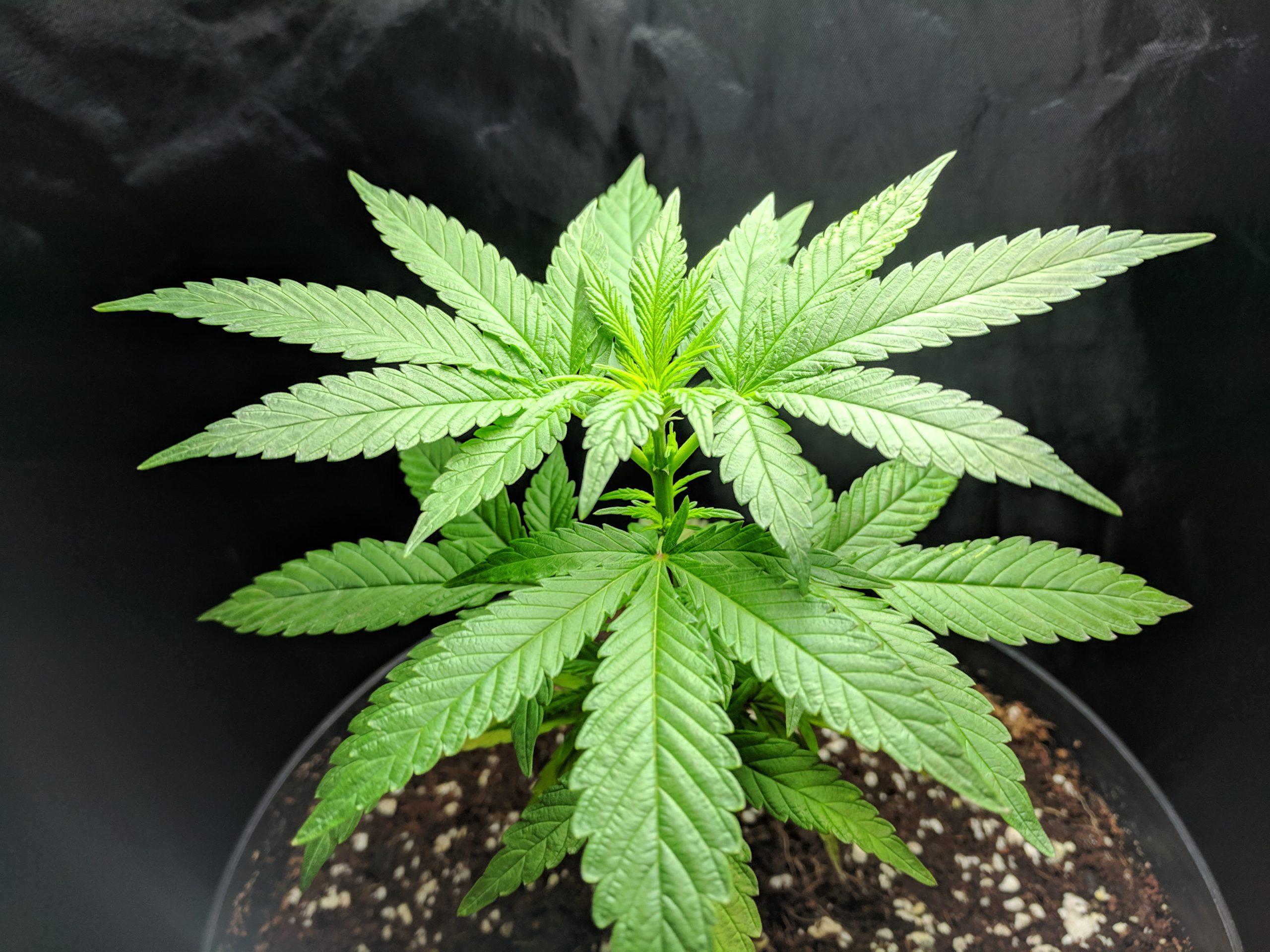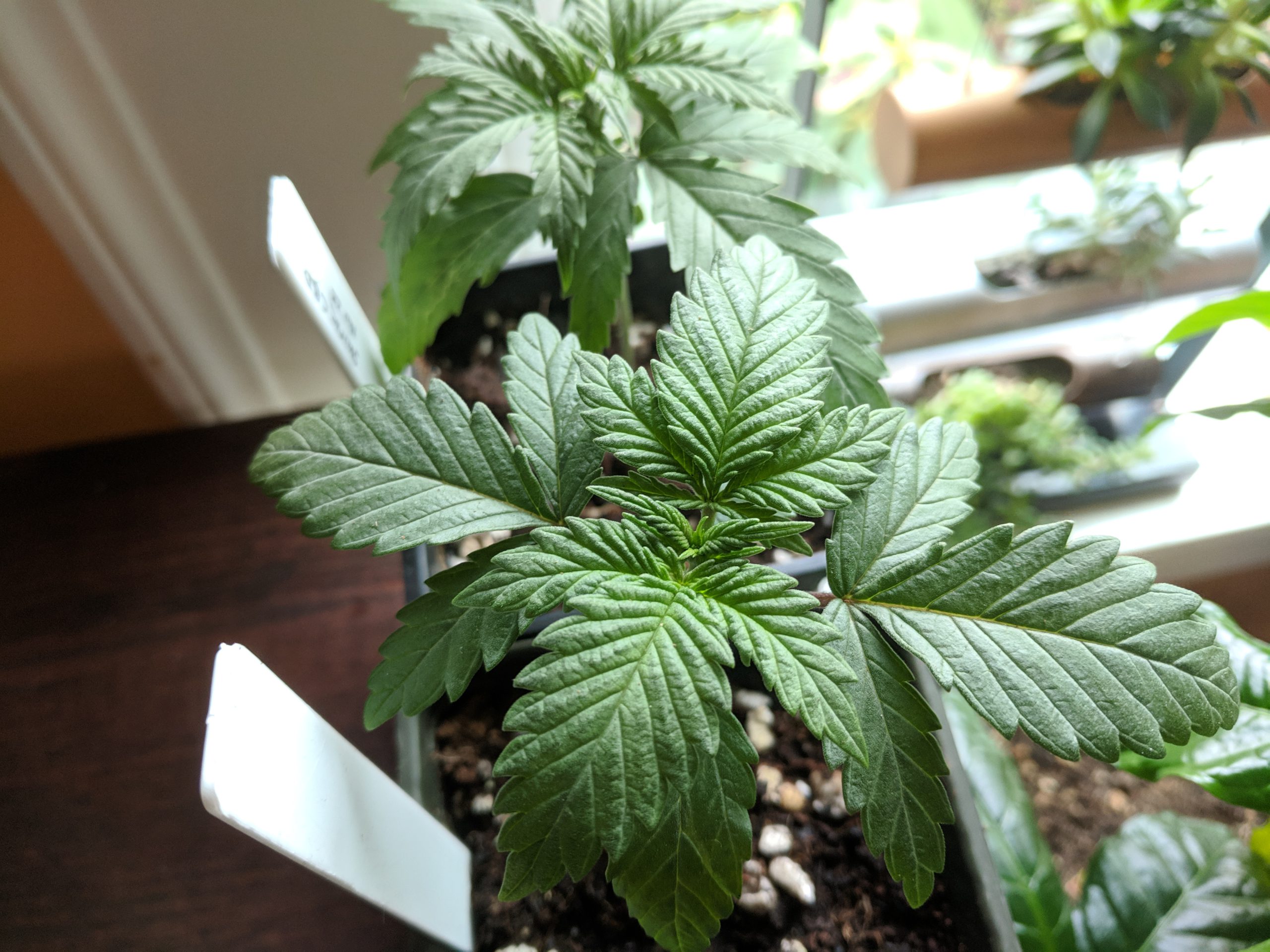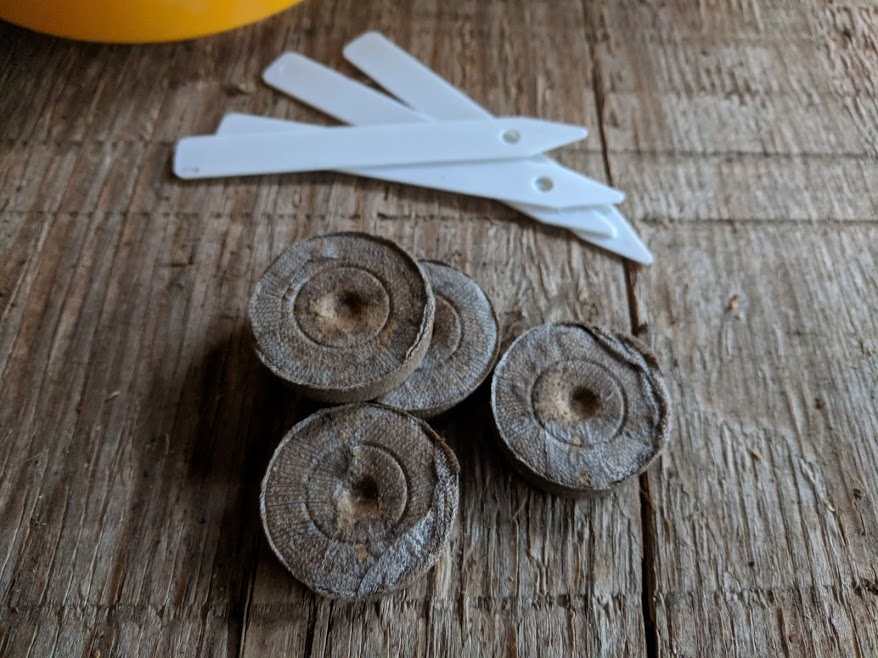If you are starting with seeds, you’ll have to germinate them to get the grow started. In this chapter, you’ll learn all about the natural conditions that cannabis seeds germinate under and then we’ll show you a failsafe way to germinate your seeds.

What is germination?
A cannabis seed is just an embryonic plant enclosed in a protective shell and germination is the process of reactivation of metabolic machinery of the seed. The outer shell splits apart and the embryonic plant emerges as a seedling. For cannabis seeds, this process takes between 1 and 7 days.
What makes seeds germinate?
Cannabis seeds lie dormant until they meet the right conditions to begin germination. In tropical conditions, cannabis seeds germinate in the warm rains of early spring. The well-drained soil of the forest floor wouldn’t be waterlogged, but it wouldn’t dry out. The ideal temperatures would be between 70°F-80°F (21°C-26°C), with 60-80% relative humidity. These spring seasonal signals tell the embryonic plant contained in the seed that conditions are right to begin its life cycles. These are the same conditions you will emulate to germinate seeds.
What’s the easiest way germinate cannabis seeds?
Peat moss pellets are pucks of dried peat moss enclosed in a fine netting. As a mostly inert medium that retains water well, peat moss pellets do a great job of mimicking the natural conditions of spring jungle floor.
What you need
Peat moss pellets – Get them online or at local department/hardware stores – they are widely available.
Filtered water – You probably have this in your fridge. pH balance between 5.5 and 6.5.
Cannabis seeds – Learn more about cannabis seeds in our guide

Step 1 – Flood the Peat Moss
Peat plugs come dried and compressed, so you need to flood them with water. Use some warm filtered water from your fridge, rainwater, or distilled water that’s pH balanced between 5.5 and 6.5. Add water until the plugs are saturated, then drain the excess water. The plugs will swell 4-5x their original volume.
Step 2 – Insert Seed
Most plugs or pellets have a small hole in the top. Insert the seed between 1/4-1/2″ (6-12MM) deep and lightly cover with an excess medium.
All emerging seedlings look identical, and most mature plants look very similar. If you start multiple strains at once, make sure to label them. Plastic plant labels can be fixed to peat moss plugs to identify the plant through its life – adding dates makes it a self-contained record.
Step 3 – Wait for it!
The next few days is mostly a waiting game. Put the pellets in a partially covered container to prevent drying out and follow these two simple rules:
DO keep the pellets warm and moist throughout germination, cannabis seeds germinate best in these conditions.
DO NOT flood or over-saturate the pellets after the initial flooding, since this will prevent the roots from getting enough oxygen. Too much water and the seedling will ‘damp out’ and fail.
One easy method to ensure that you get the right amount of water is to use a spray bottle to wet the outside edges. Another is to quickly dip the bottom of the pellets into the water; moisture will wick upwards to the rest of the pellets. Either method will encourage roots to grow outward.

Step 4 – Care for it!
As your young seedling emerges from the seed, you’ll notice that it has a set of ‘built-in’ leaves that don’t look a lot like pointy cannabis leaves. These are the cotyledons, and they are there to help the young seedling bootstrap the photosynthesis process. Young seedlings need light right away – but not too bright for the first few days
Keep the peat pellet moist until the seedling is ready to plant in a growing medium, but never saturate the pellet since that can drown the young plant. Add water from the bottom up by dipping the pellet quickly in water. This will promote rapid root growth as the roots will grow down after the water.
When is it time to plant the seedlings?
You’ll know when it’s time because roots will be bursting out of the bottom of the peat pellet. Plant the pellet in a solo cup sized container using a quality soil mix. Water without nutrients for the first few weeks.
Optimizations & Alternatives
Germination Heat Mats
Germination heat mats are just like heating pads, but they don’t get as hot and are water resistant. These are especially useful for germinating seeds in colder conditions.
Germination Enclosures
One of the best ways to simulate tropical climates is to use an enclosure to conserve moisture and heat. You can make your own from cheap plastic containers, or buy a special purpose kit made for peat pellets. Used along with a germination heat mat, you can easily set up a tropical jungle climate anywhere.
If you want professional results with no hassle and complete stealth, try a professional grow-box.
Can I germinate seeds in paper towels?
Yes, you can germinate marijuana seeds in moist paper towels. Just put a damp paper towel down on a plate or other container and spread the seeds around. Add another damp paper towel or fold over the existing towel to cover all the seeds. You will need to keep the paper towels damp at all times throughout the germination process – a spray bottle can really come in handy for that. Covering the seeds with another plate or plastic will prevent it from drying out too quickly, just make sure that there is still some airflow for when the seedling emerges.
After a few days, the seed will crack and the embryonic cannabis plant will start to emerge. Once you see a solid root begin to emerge, you will need to transplant it into your growing medium. While this approach might be slightly faster than the other methods we’ve shown here, we don’t use this method because of the risk to the plant and main root during transplanting.
Can I germinate seeds directly in the growing medium?
That’s how it works in nature and it’s easy to do. Use a solo cup sized container filled with soil or coco and place the seeds about 3/4 inch (~ 2cm) deep. Keep the medium moist but not wet until you see the seedlings emerge between 3 and seven days later. The reason we recommend peat moss over directly planting in soil is that it is easier to control moisture levels in peat plugs due to the texture and qualities of peat. Experienced growers often sew directly into the growing medium.
Many farmers use rock wool cubes for starting clones and germination, particularly hydroponic growers. While these work well and are economical, they come with drawbacks. We recommend that new growers begin with peat pellets.
How long does it take to germinate?
From the time that you place your seed into the germination medium, you should start to see the emerging seedling within 2-5 days. Cannabis seeds germinate faster when they are kept at the correct temperatures, between 70°F-80°F (21°C-26°C), with a 60-80% relative humidity. Cooler temperatures will slow the germination process or stop it altogether. Germination is usually complete, and the plant is a young seedling within seven days. If you warm the seedlings with a heat mat, they can emerge in as little as 24 hours.
Should I germinate with nutrients?
Germinating plants don’t need any nutrients; it can burn their new leaves and roots. That’s why it’s best to grow seeds in an inert medium, like peat moss pellets or a paper towel. Young seedlings don’t need nutrients until they are a few weeks old.
Do cannabis seeds need light to germinate?
Not really, but they need light within the first day or so of emerging from the seeds, so it’s a good idea to germinate with a light source. Light sources also help increase the temperature, helping the germination process. Sunlight, fluorescent or low powered LED grow lights are all great options.
What if the seed gets stuck on the seedling?
They usually loosen and come off after a day or two. If it doesn’t come off, you can try to separate them. The easiest method is to find the direction of the crack and use a pair of tweezers to ‘help’ the seed continue cracking. Be careful that you don’t clamp the seed down or you can clip the folded embryonic leaves.
Next up, read our seedling care guide to learn how to care for your new seedling.





